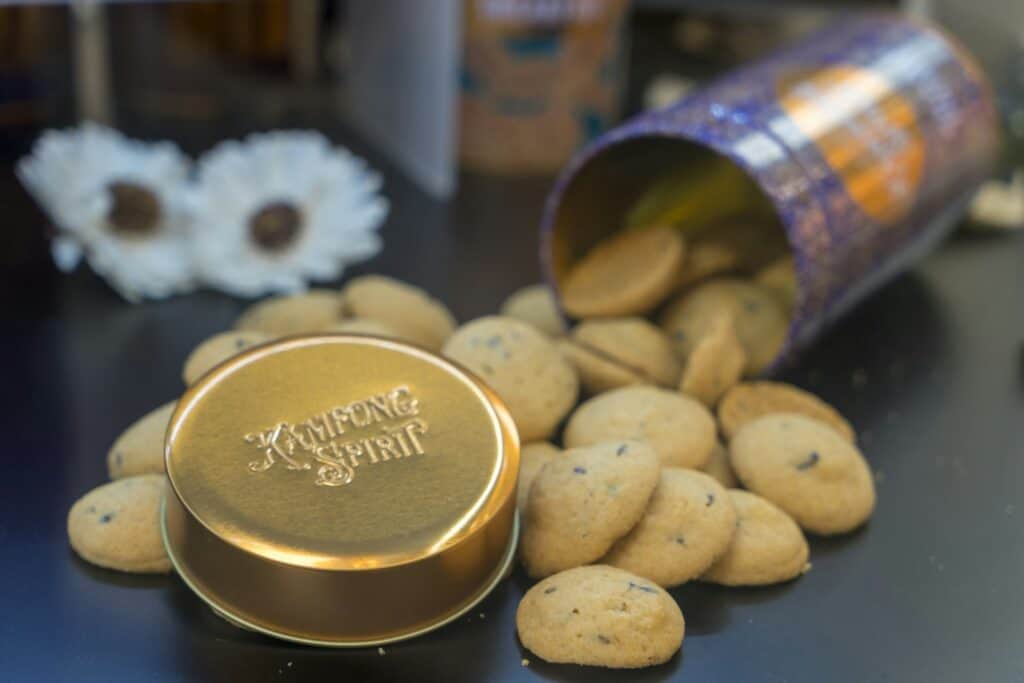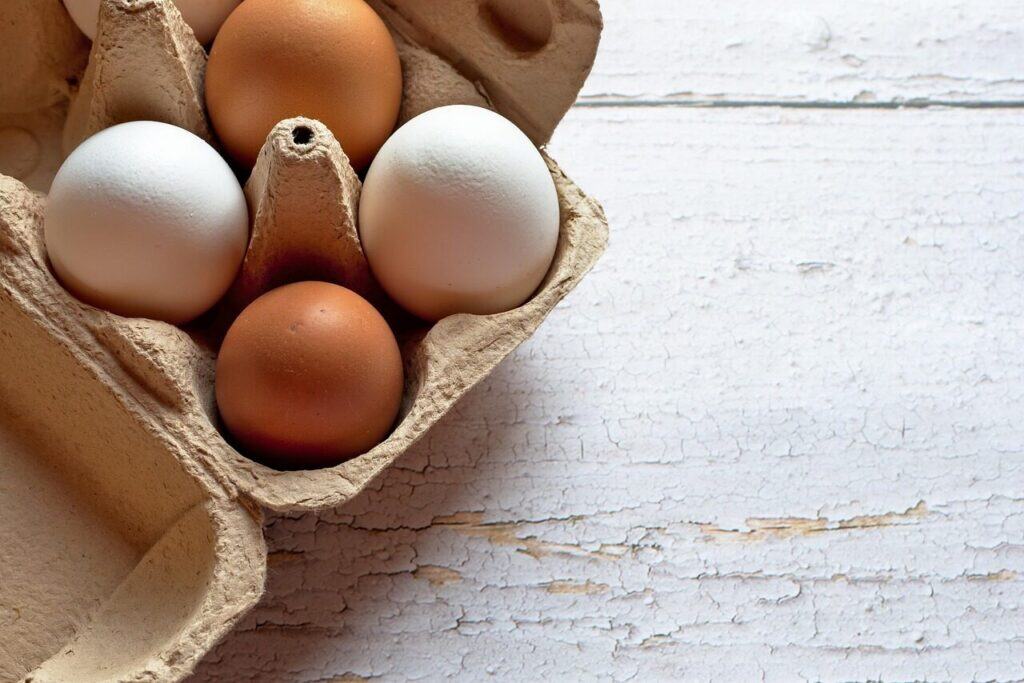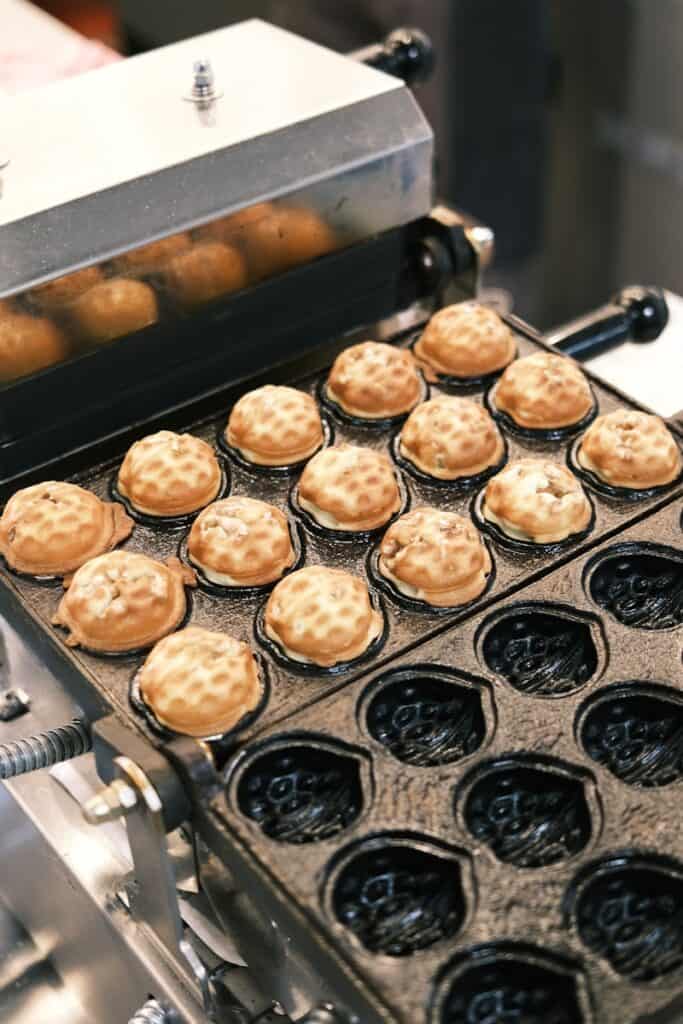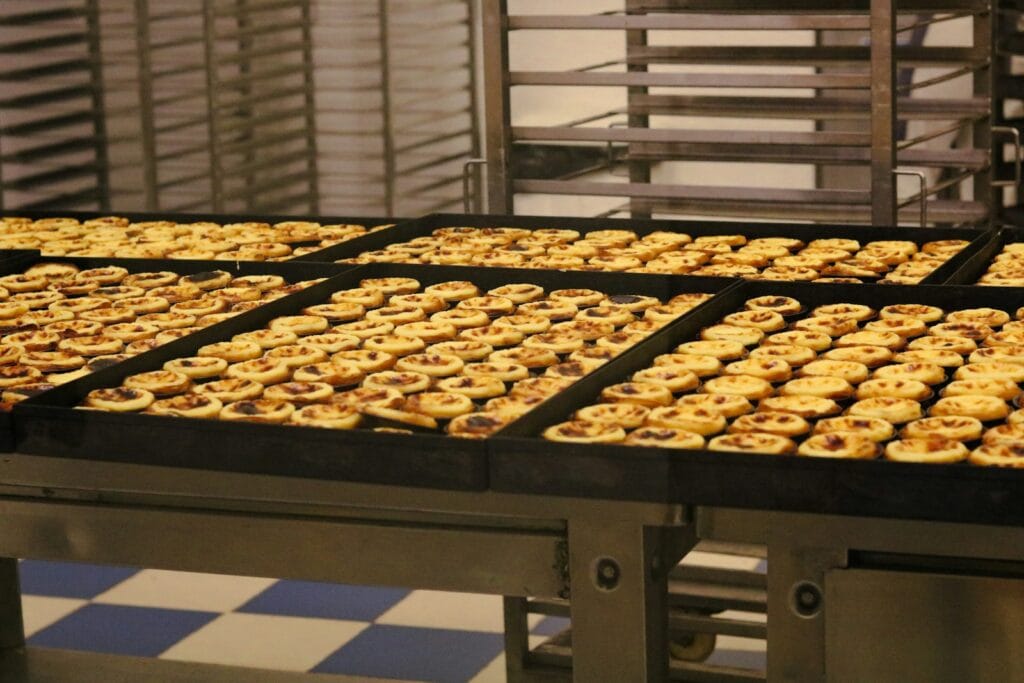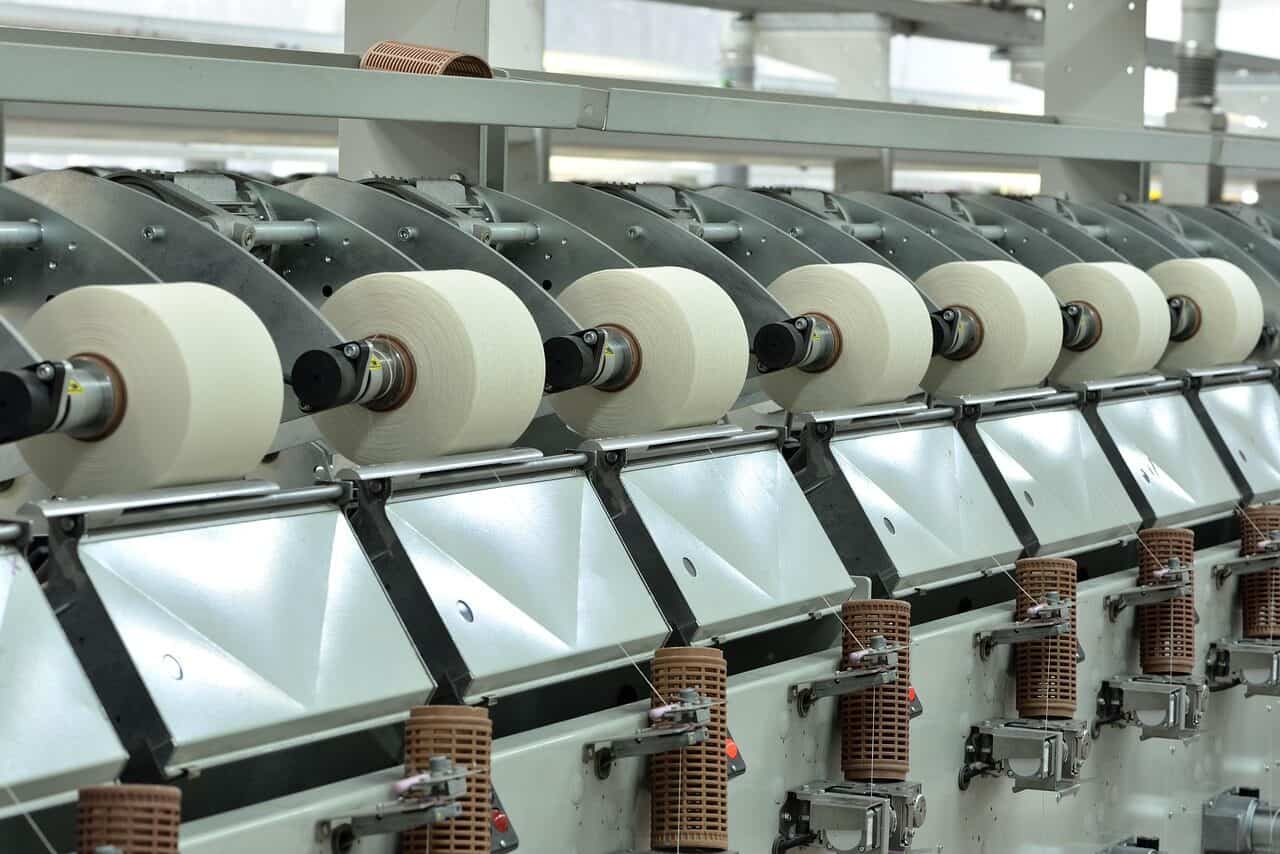Передовые машины для упаковки печенья: Как автоматизация формирует привлекательность на полке
На конкурентном рынке хлебобулочных изделий момент истины происходит на полке магазина. Качество вашего печенья важнее всего, но именно упаковка создает первую связь с покупателем. Именно она рассказывает историю вашего бренда о свежести, качестве и ценности еще до того, как будет сделан первый укус. Вопрос для менеджеров по производству и владельцев брендов заключается уже не в том, важна ли упаковка, а в том, как сделать ее идеально и эффективно в больших масштабах. Ответ кроется в передовой автоматизации упаковки. Инвестиции в правильную машину для упаковки печенья - это разумный шаг, который напрямую влияет на привлекательность на полке, обеспечивает постоянство бренда и дает вам конкурентное преимущество.
Эта статья выходит за рамки базовых спецификаций и представляет собой стратегическое руководство для ваших следующих инвестиций. Мы рассмотрим, что автоматизация - это не только скорость, но и улучшение присутствия вашего бренда на переполненном рынке. Вы получите четкое представление о:
- Стратегическое влияние автоматизации на восприятие бренда и прибыльность.
- Основные типы машин для упаковки печенья и их конкретное применение.
- Важнейшая, часто упускаемая из виду связь между дизайн упаковки и машины возможность.
- Как совместить цели устойчивого развития с высокоскоростной автоматизацией.
- Практическое руководство по выбору подходящей машины и расчету окупаемости инвестиций.
Стратегическое влияние автоматизации
Разговоры об автоматизации упаковки часто начинаются и заканчиваются на показателях количества упаковок в минуту. Хотя скорость - это важный показатель, его истинная ценность раскрывается, если смотреть на него через стратегическую призму. Современная упаковочная машина для печенья - это инструмент для создания бренда, гарант контроля качества и ворота для рыночных инноваций. Это создание ценности далеко за пределами заводского цеха.
Идеальная презентация, каждый раз
Ручные или полуавтоматические упаковочные линии подвержены человеческой несогласованности. Немного неправильно расположенная этикетка, неаккуратно сложенная обертка или слабая печать - все это может отвлечь внимание от продукта премиум-класса. Эти мелкие недочеты, умноженные на тысячи единиц, создают непоследовательный и непрофессиональный образ бренда на полке. Автоматизация устраняет эту вариативность. Обмотчик или картонатор с сервоприводом выполняет каждый сгиб, резку и печать с цифровой точностью. Это гарантирует, что каждая упаковка, покидающая ваше предприятие, будет идеально представлять стандарт качества вашего бренда, укрепляя доверие потребителей и повышая их ценность.
Защита продукта, защита прибыли
Печенье по своей природе хрупкое. Каждый излом, трещина или крошка - это потерянный продукт и упущенная выгода. Ручная обработка, с ее непостоянными давлениями и движениями, является значительным источником повреждения продукции. Автоматизированные системы предназначены для бережного обращения. Специально разработанные системы подачи, роботизированные манипуляторы и синхронизированные конвейеры плавно и точно перемещают продукт, снижая ударные нагрузки и вибрацию. Анализ отрасли показывает, что хорошо реализованная автоматизированная упаковка Линии могут сократить количество повреждений продукции до 15% по сравнению с ручными процессами. Такое сокращение отходов напрямую влияет на итоговый результат, гарантируя, что клиент получит неповрежденный и высококачественный продукт, которого он ожидает.
Раскрытие потенциала дизайна
Самые креативные концепции упаковки вашей маркетинговой команды часто ограничены рамками ручной сборки. Сложные фальцы, упаковки из нескольких материалов или премиальные лотки с плотной оберткой либо слишком медленны, либо слишком дороги, чтобы производить их вручную в больших масштабах. Автоматизация упаковки разрушает эти барьеры. Она обеспечивает гибкость дизайна для создания сложной упаковки, привлекающей внимание. Будь то ласточкин пакет с завязками, идеально запечатанная упаковка печенья, предназначенная для употребления на ходу, или сложная картонная коробка с внутренним лотком, автоматизация делает упаковку премиум-класса масштабируемой реальностью. Это позволит вашему бренду выделиться, создать незабываемые впечатления от распаковки и получить более высокую цену.
Руководство по типам машин
Выбор подходящей машины для упаковки печенья требует четкого понимания имеющихся технологий и их соответствия вашему продукту, стилю упаковки и производственным целям. Процесс обычно делится на этапы: первичная упаковка (непосредственно контакт с бисквитом), вторичная упаковка (группировка первичных упаковок) и третичная упаковка (упаковка в футляр для транспортировки). Здесь мы сосредоточимся на первичном и вторичном этапах, где рождается привлекательность на полке.
Понимание ваших возможностей
Машины для упаковки печенья разнообразны, и каждая система предназначена для конкретного применения. От высокоскоростных поточных упаковочных машин, создающих простые пакеты-подушки, до сложных картонных машин, собирающих коробки премиум-класса, - главное, чтобы возможности машины соответствовали вашим уникальные характеристики продукта и вашего бренда позиционирование на рынке.
Сравнение основных технологий
| Тип машины | Стиль упаковки | Лучший вариант (тип бисквита) | Ключевое преимущество автоматизации |
| Горизонтально-поточные упаковочные машины (HFFS) | Подушки, пакеты с ластовицей | Отдельные бисквиты, слизни на краю или в стопке, подносы | Высокая скорость, отличная герметичность, универсальность для различных количеств продуктов. |
| Вертикальная пломба для заполнения формы (VFFS) | Мешки-подушки, мешки с блочным дном | Неплотное, маленькое или неправильной формы печенье (например, печенье, крекеры) | Эффективное использование площади, идеальное решение для сыпучих продуктов и предприятий общественного питания. |
| Картонажные машины (картонажные машины) | Картонные коробки с торцевой или клеевой стороной | Завернутые слизни, печенье в мешочках или печенье в лотках | Создает жесткую упаковку премиум-класса с высокой степенью воздействия на полку и брендовую недвижимость. |
| Обертки для печенья с краями | Обертки с финишной печатью или с фальцевым концом | Круглое, квадратное или прямоугольное печенье (например, крекеры, дижестивы) | Высокоскоростная, плотная упаковка для классических пакетов с пулями, превосходная защита продукта. |
| Роботизированные комплектовочные системы | Загрузка в лотки, картонные коробки или упаковку | Деликатесное, украшенное или ассорти печенья | Непревзойденная гибкость, бережное обращение и возможность создания разнообразных упаковок. |
Рабочая лошадка: горизонтально-поточные упаковочные машины
Горизонтальные машины для запайки по форме (HFFS) - это, пожалуй, самый распространенный тип упаковочных машин для печенья. Продукт подается горизонтально по конвейеру в непрерывную трубку из пленки. Затем машина запечатывает пленку с обоих концов и в центре ("плавниковое уплотнение"), чтобы создать герметичную упаковку-подушку. Современные системы HFFS невероятно быстры и надежны, что делает их идеальными для крупносерийного производства любых продуктов - от завернутого печенья на одну порцию до нескольких упаковок крекеров на картонной U-образной доске.
Универсальное решение: Вертикальная печать с заполнением формы
Для сыпучих продуктов, таких как мелкое печенье или крекеры, идеальным решением является машина с вертикальной формой запечатывания (VFFS). Продукт сбрасывается с весов или счетчика над машиной в вертикальную трубку с пленкой. Машина запечатывает пакет вертикально и горизонтально, создавая готовый пакет. Системы VFFS отличаются высокой эффективностью использования производственных площадей и отлично подходят для создания пакетов для розничной торговли, а также упаковок большего формата для общественного питания или клубных магазинов.
Премиальная отделка: Картонажные машины
Когда присутствие на полке является первостепенной задачей, решением проблемы становятся картонные машины. Эти машины берут предварительно упакованные кусочки, пакеты или лотки с печеньем и автоматически устанавливают, загружают и запечатывают их в картонную коробку. Картонные коробки обеспечивают большую плоскую поверхность для нанесения графики и брендинга, создающих ощущение качества и значимости. Автоматические картонажные машины могут работать с широким диапазоном стилей картонной упаковки, от простых коробок с завязками до сложных конструкций с клеевой печатью, что позволяет получить действительно премиальную отделку.
Специалист: Обертки для печенья с краями
Для классики продукты, такие как печенье для пищеварения или сальтиновые крекеры, машина для упаковки печенья на краю является специализированным инструментом для этой работы. Эти машины собирают печенье прямо с охлаждающего конвейера в счетные стопки или "слизни". Затем они плотно заворачивают печенье, часто с уплотнением в виде плавника и загнутыми концами, создавая привычную упаковку для продуктового магазина. Эти системы оптимизированы для очень высоких скоростей и эффективности с однородным, твердым печеньем.
Проектирование для автоматизации
Одна из самых значительных и дорогостоящих ошибок при реализации упаковочного проекта - разработка дизайна упаковки отдельно от оборудования, на котором она будет работать. Наиболее успешные, эффективные и прибыльные автоматизированные упаковочные линии являются результатом сотрудничества между дизайном упаковки и проектированием. Концепция *проектирования для обеспечения технологичности* должна стать руководящим принципом с первого дня работы.
Совместная работа дизайнеров и инженеров
Красивый пакет, который сложно автоматизировать, - это неудачный дизайн. Проблемы часто возникают, когда команды маркетологов и инженеров не работают вместе. Мы видели, как проекты задерживались на месяцы из-за того, что откидная крышка картонной коробки была спроектирована под необычным углом, с которым не могли справиться стандартные картонажные машины, что потребовало дорогостоящей индивидуальной оснастки и свело на нет прогнозируемую рентабельность инвестиций. Аналогично, гибкая пленка с потрясающей матовой поверхностью может иметь высокий коэффициент трения, что приведет к ее затягиванию и заклиниванию на высокоскоростном обмотчике. Ранний и постоянный диалог между разработчиком упаковки, поставщиком материалов и инженером по автоматизации - не просто лучшая практика, он необходим для достижения успеха.
Материал имеет значение для скорости
Подложка, которую вы выбираете для упаковки, - это не просто холст для вашего бренда; это важнейший компонент оборудования. Для высокоскоростной автоматизации свойства материала имеют первостепенное значение.
- Жесткость и толщина пленки: Слишком хрупкая пленка может растянуться или порваться под действием натяжения обертки, а слишком толстая пленка может не складываться или не запечатываться должным образом. Последовательность является ключевым фактором.
- Коэффициент трения (COF): Это свойство определяет, насколько легко пленка скользит по формующим манжетам и пластинам машины. Несоответствие может привести к замятиям, плохой герметизации и несоответствию длины пакета.
- Слой герметика: Тип, толщина и температура активации слоя герметика должны быть идеально подобраны к запечатывающим губкам машины (будь то тепловая, холодная или ультразвуковая печать) для достижения быстрого, прочного и надежного уплотнения.
- Регистрационные метки печати: Эти маленькие метки, невидимые потребителю, используются фотоглазом машины для определения места разрезания пленки. Их расположение, размер и цветовой контраст очень важны для точного определения длины упаковки.
Структурные соображения
Физическая структура вашего печенья и упаковки напрямую влияет на эффективность автоматизации. Стопка круглого печенья, естественно, более устойчива, чем стопка печенья неправильной формы. При проектировании для автоматизации следует учитывать:
- Жесткость лотка: Если вы загружаете печенье в пластиковый или картонный лоток, он должен быть достаточно жестким, чтобы выдерживать движение конвейера и процесс загрузки, не прогибаясь и не разрушаясь.
- Прочность картонной складки: Складки на плоской картонной заготовке должны быть достаточно глубокими и равномерными, чтобы картонщик мог каждый раз ровно и аккуратно складывать ее. Некачественные складки приводят к замятиям и неправильной форме коробок.
- Геометрия продукта: Форма и расположение печенья могут существенно повлиять на удобство автоматической свертки и загрузки. Иногда незначительное изменение размеров бисквита или количества штук может привести к значительному повышению скорости и надежности упаковочной линии.
Устойчивое будущее
Современные потребители, ритейлеры и регулирующие органы требуют экологичной упаковки. Для производителей это представляет собой серьезную проблему: как внедрить экологически чистые материалы без ущерба для скорости, эффективности и надежности автоматизированной упаковочной линии. Главное - подходить к экологичности не как к препятствию, а как к инженерному параметру, который можно решить с помощью грамотного выбора и настройки оборудования.
Зеленый вызов
Основной конфликт заключается в том, что многие экологичные материалы нового поколения ведут себя не так, как традиционные многослойные пластики, для которых изначально были разработаны упаковочные машины. Бумага более абразивна и менее податлива, чем пластиковая пленка. Перерабатываемые мономатериалы часто имеют более узкое температурное окно запечатывания. Компостируемые биопластики, такие как PLA, могут быть хрупкими и чувствительными к нагреву. Простая замена материалов на существующем оборудовании без внесения изменений - залог неудачи.
Устойчивые материалы и автоматизация
| Тип материала | Преимущество устойчивости | Задача автоматизации | Регулировки/решения для машин |
| Перерабатываемые мономатериальные пленки (например, полиэтилен, полипропилен) | "Store drop-off", пригодный для вторичной переработки, поддерживает циркулярную экономику. | Более узкое окно термозапечатывания, возможность растяжения. | Усовершенствованный контроль температуры на запечатывающих губках, сервопривод транспортировки пленки для точного контроля натяжения. |
| Бумажные обертки/структуры | Переработка на месте, возобновляемый ресурс, отличное восприятие потребителем. | Более абразивные, склонны к разрывам, трудно герметично запечатываются при нагревании. | Специальные комплекты для формования, совместимые с бумагой, технология холодной запечатки или ультразвуковая запечатка; более бережное обращение. |
| Компостируемые/биопленки (например, PLA) | Промышленно компостируемый материал, полученный из возобновляемых ресурсов. | Может быть хрупким, чувствительным к температуре и влажности, имеет более низкие барьерные свойства. | Хранение в климатических условиях, точный контроль тепла, потенциальная потребность в специализированных запечатывающих губках или ультразвуковой технологии. |
Адаптация к новым материалам
Для успешного использования экологически чистых материалов требуется современная машина для упаковки печенья, способная к адаптации. Для этого могут потребоваться специальные настройки оборудования и программного обеспечения. Для бумажных упаковок традиционное тепловое запечатывание часто оказывается неэффективным. Вместо этого машины могут быть оснащены аппликаторами холодной запечатки (когда предварительно нанесенный клей прижимается) или ультразвуковыми запечатывающими головками, которые используют высокочастотные колебания для скрепления волокон. Для чувствительных мономатериалов это означает замену старых картриджей с нагревателями на усовершенствованные ПИД-регуляторы температуры, которые поддерживают точную температуру запечатывания в очень узком диапазоне. Усовершенствованные датчики и сервоуправление также играют важную роль, позволяя машине управлять натяжением и транспортировкой пленки с новым уровнем точности, необходимым для этих менее требовательных материалов.
Принцип "уменьшения"
Помимо выбора материалов, автоматизация является мощным инструментом для обеспечения устойчивого развития "Сокращение". Точность автоматизированной линии значительно минимизирует отходы. Функция "Нет продукта - нет пакета" не позволяет машине сделать пустой пакет, если в потоке продуктов есть разрыв, что позволяет экономить пленку. Точная резка и запечатывание уменьшают количество бракованных пакетов. Оптимизируя эффективность и минимизируя количество брака, хорошо работающая автоматизированная линия вносит непосредственный вклад в достижение целей устойчивого развития, поскольку использует меньше материалов и энергии на единицу продукции, независимо от используемой подложки.
Инвестиции
Современная машина для упаковки печенья - это значительные капитальные затраты. Для оправдания этих инвестиций требуется четкая оценка ее характеристик и всесторонний расчет окупаемости инвестиций (ROI). Бизнес-обоснование должно выходить за рамки простой экономии трудозатрат и включать в себя повышение эффективности, качества и готовности к выходу на рынок.
Контрольный список обязательных функций
Оценивая современную машину для упаковки печенья, обратите внимание на функции, которые обеспечивают гибкость, сокращают количество отходов и гарантируют качество. Этот контрольный список поможет вам сориентироваться в процессе выбора:
- Быстрая переналадка без использования инструментов: Возможность переключения между различными размерами печенья, количеством или форматами упаковки с минимальным временем простоя имеет решающее значение для гибкости работы.
- Функция "Нет продукта - нет пакета": Эта интеллектуальная функция обнаруживает зазоры в подаче продукта и останавливает циклическое движение пленки и торцевых уплотнений, что позволяет со временем сэкономить значительное количество упаковочного материала.
- Интегрированный контроль качества: Современные машины могут быть оснащены системами технического зрения для проверки кодов даты, правильности размещения этикеток и целостности печати, автоматически отбраковывая несоответствующие упаковки.
- Интуитивно понятный интерфейс HMI (человеко-машинный интерфейс): Большой и понятный интерфейс с сенсорным экраном упрощает управление, поиск неисправностей и переналадку, снижая потребность в высококвалифицированных операторах.
- Двигатели с сервоприводом: По сравнению со старыми механическими или пневматическими системами сервоприводы обеспечивают непревзойденную точность, скорость, надежность и повторяемость всех движений машины.
- Обратная связь с данными и готовность к IIoT: Возможность подключения машины к заводской сети для мониторинга производительности в реальном времени (OEE), предупреждений о необходимости профилактического обслуживания и регистрации данных необходима для интеллектуальной заводской среды.
Оправдание затрат
Надежный расчет окупаемости инвестиций - краеугольный камень любого запроса на капитальные затраты. Он должен охватывать все области финансового воздействия, а не только очевидное сокращение численности операторов. Приведенная ниже схема представляет собой упрощенный пример того, как следует строить этот анализ.
| Метрика | Ток (ручной/полуавтоматический) | Прогнозируемый (полностью автоматизированный) | Годовая экономия/прибыль |
| Расходы на оплату труда (2 смены) | 4 оператора @ $50k/год = $200,000 | 1 оператор @ $60k/год = $60,000 | $140,000 |
| Производительность (упаковок в минуту) | 40 PPM | 120 PPM | (Увеличение выручки/пропускной способности) |
| Стоимость материальных отходов/повреждений | 5% продукции = $50,000 | 1,5% продукции = $15,000 | $35,000 |
| Время работы/эффективность % | 70% | 90% | (Увеличение пропускной способности) |
| Общая годовая экономия | $175,000 | ||
| *Срок окупаемости* | `Общие инвестиции / Общая годовая экономия` | Например, $525,000 / $175,000 = 3 года. |
Этот анализ демонстрирует, что выгода складывается из множества источников: прямая экономия труда, сокращение отходов материалов и порчи продукции, а также значительное повышение общей эффективности оборудования (OEE). Такое комплексное видение дает гораздо более весомые аргументы в пользу инвестиций.
Заключение
В конечном счете, современная машина для упаковки печенья - это не просто оборудование для упаковки продукта в обертку. Это стратегический актив. Это двигатель, который воплощает обещания вашего бренда в физическую реальность на полке, последовательно и масштабно. Инвестиции позволят вам повысить привлекательность на полке, гарантировать качество продукции, достичь амбициозных целей в области устойчивого развития и открыть новые уровни инноваций в дизайне.
Однако путь к успеху требует целостного подхода. Наиболее дальновидные производители понимают, что упаковка и машина - это не отдельные объекты, а одна интегрированная система. Если с самого начала наладить сотрудничество между конструкторами, инженерами и производственниками, можно избежать дорогостоящих ошибок и полностью раскрыть потенциал инвестиций в автоматизацию. Правильный выбор в пользу автоматизации упаковки - это решение, которое принесет дивиденды в виде эффективности, прибыльности и роста бренда на долгие годы.
- Вертикальная машина для запечатывания форм - Википедия https://en.wikipedia.org/wiki/Vertical_form_fill_sealing_machine
- Справочник по технологиям и машинам для запечатывания форм - Упаковка и этикетка https://www.packaging-labelling.com/articles/an-outline-to-form-fill-seal-technology-machines
- Устойчивая и биологически чистая пищевая упаковка: Обзор прошлых и современных инноваций в области дизайна - PMC (NIH) https://pmc.ncbi.nlm.nih.gov/articles/PMC10000825/
- Современный статус правил экологичной упаковки пищевых продуктов: Глобальная перспектива - MDPI https://www.mdpi.com/2071-1050/16/13/5554
- Потребность в экологичной упаковке: Обзор - PMC (NIH) https://pmc.ncbi.nlm.nih.gov/articles/PMC9609329/
- Устойчивая упаковка для пищевых продуктов: Обновленное определение, основанное на целостном подходе - Frontiers https://www.frontiersin.org/journals/sustainable-food-systems/articles/10.3389/fsufs.2023.1119052/full
- Упаковочное оборудование - Википедия https://en.wikipedia.org/wiki/Packaging_machinery
- Упаковка для пищевых продуктов - ScienceDirect Topics https://www.sciencedirect.com/topics/agricultural-and-biological-sciences/food-packaging
- Экологичная упаковка для продуктов питания - CalRecycle (Калифорнийский департамент по переработке и восстановлению ресурсов) https://calrecycle.ca.gov/packaging/statefoodservice/
- Все, что нужно знать об экологичной упаковке - DigiComply https://www.digicomply.com/blog/everything-you-need-to-know-about-sustainable-packaging


